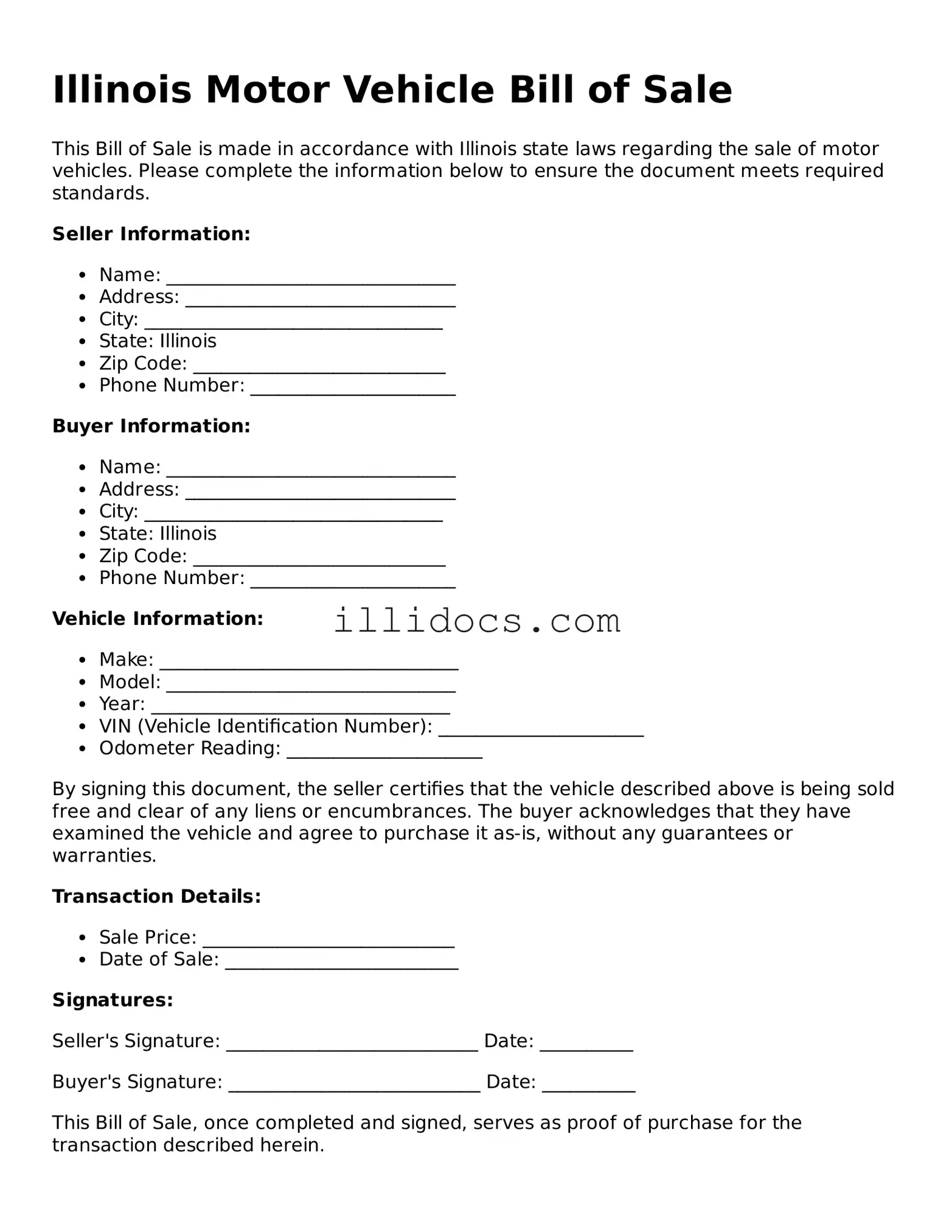The Illinois Motor Vehicle Bill of Sale form is a legal document that records the sale of a vehicle between a buyer and a seller. It includes essential details such as the vehicle's make, model, year, VIN, and the sale price. This form serves as proof of the transaction and can be useful for both parties in case of future disputes or for registering the vehicle.
How do I fill out the Illinois Motor Vehicle Bill of Sale form?
To complete the form, you need to provide specific information, including the buyer's and seller's names, addresses, and signatures. Additionally, include the vehicle's details, such as the make, model, year, and Vehicle Identification Number (VIN). Finally, state the sale price and the date of the transaction. Ensure all information is accurate to avoid complications later.
Is the Bill of Sale required for vehicle registration?
While not always mandatory, the Bill of Sale is often required when registering a vehicle in Illinois, especially if the vehicle is purchased from a private seller. It acts as proof of ownership and the sale price, which may be necessary for tax purposes. Check with your local Department of Motor Vehicles (DMV) for specific requirements.
Can I create my own Bill of Sale?
Yes, you can create your own Bill of Sale as long as it includes all the necessary information. However, using the official Illinois Motor Vehicle Bill of Sale form ensures that you meet all legal requirements and that the document is recognized by the state. Templates are available online for convenience.
What if I lose the Bill of Sale after the sale?
If you lose the Bill of Sale after the transaction, it may be challenging to prove ownership. It's advisable to keep a copy for your records. If necessary, the seller may be able to provide a duplicate, but this is not guaranteed. Always store important documents in a safe place.
Can the Bill of Sale be used for trade-ins?
The Bill of Sale can be used for trade-ins, but it may not be the only document needed. When trading in a vehicle, dealerships often require additional paperwork, such as the title and any loan payoff information. Ensure you understand the dealership's requirements to facilitate a smooth transaction.
What should I do if there are errors on the Bill of Sale?
If you notice any errors on the Bill of Sale, address them immediately. Both parties should agree on the corrections and initial the changes to confirm accuracy. If significant errors exist, it may be best to create a new Bill of Sale to avoid confusion in the future.
